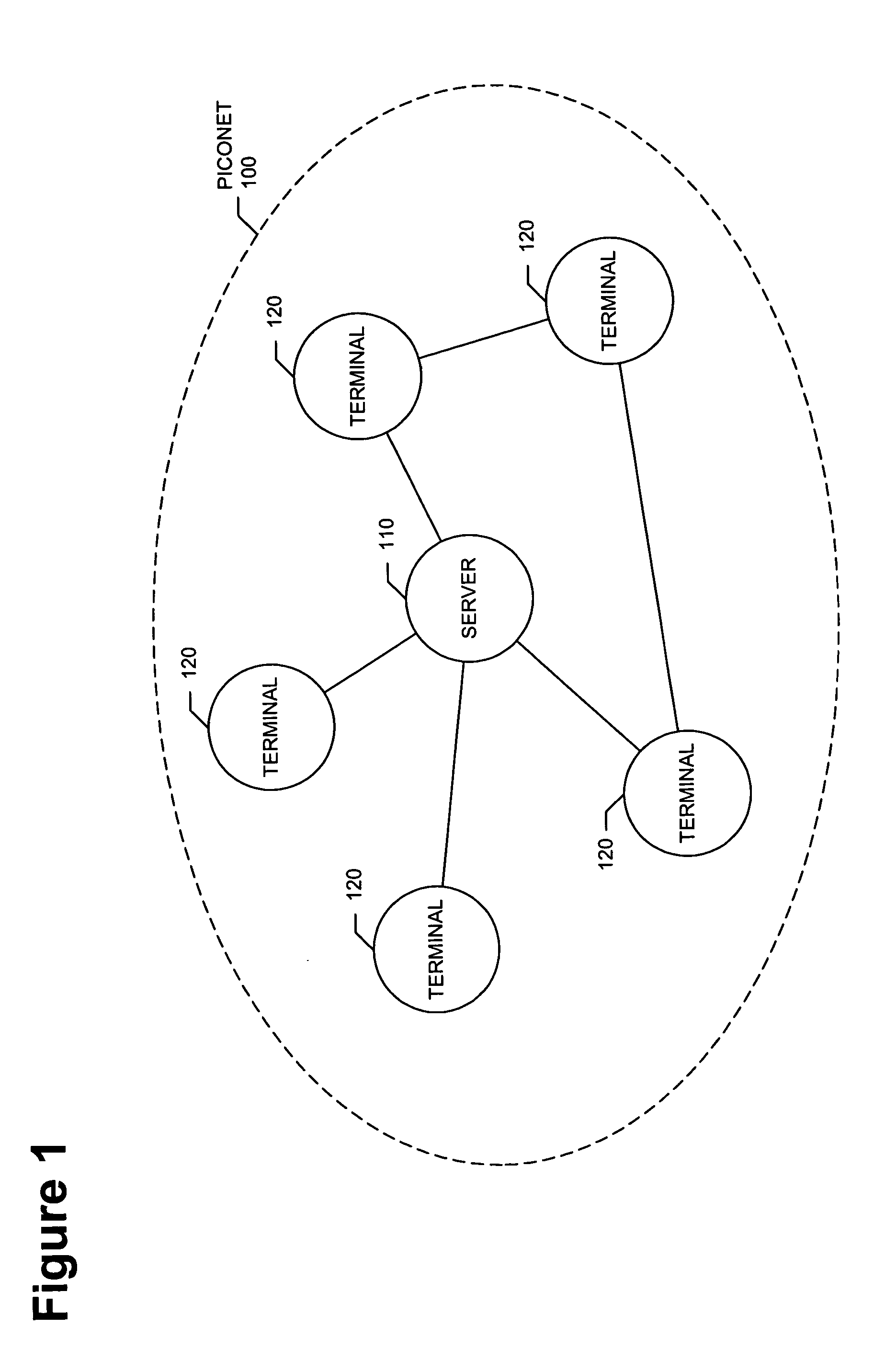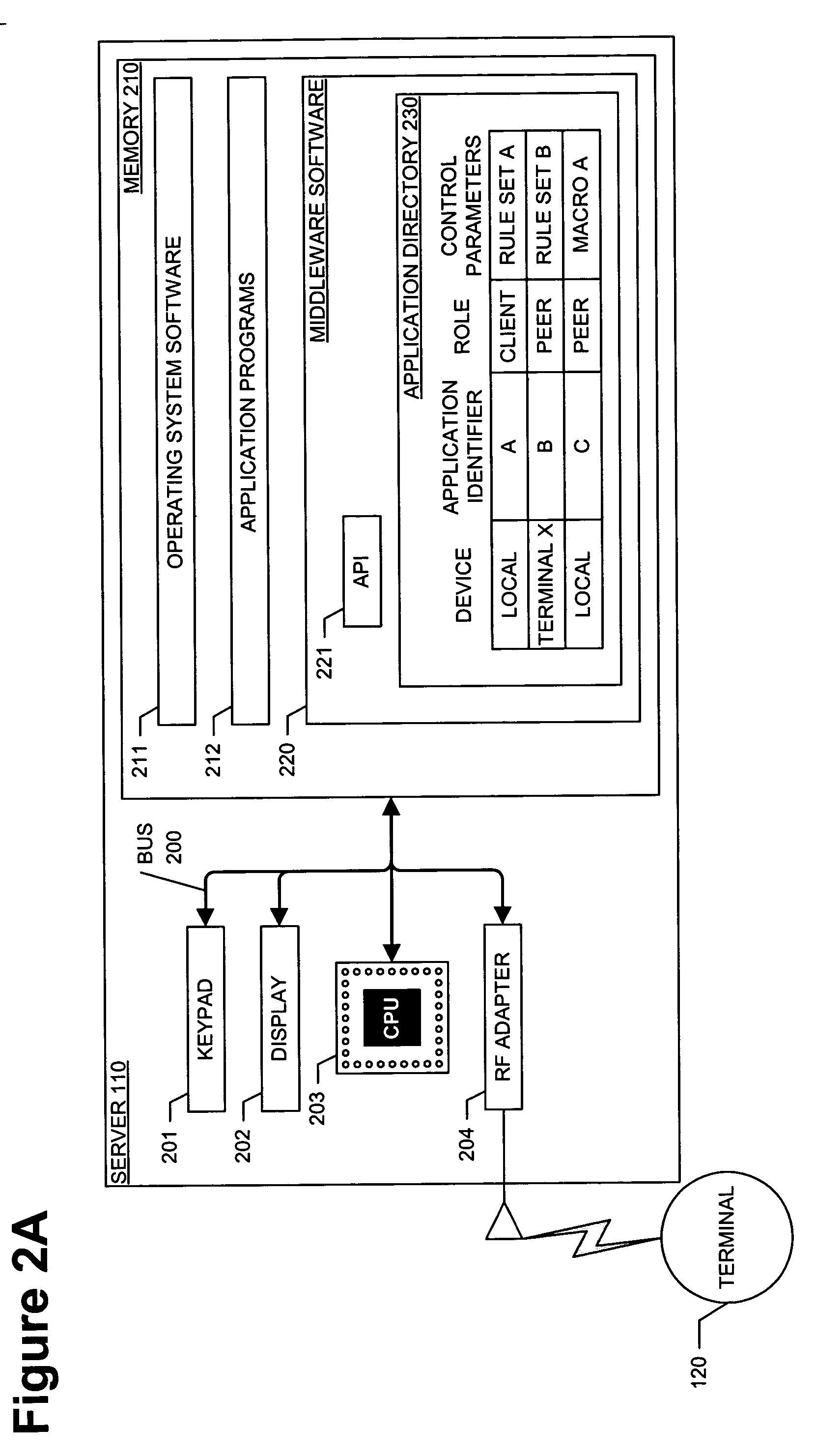Application control in peer-to-peer ad-hoc communication networks
a peer-to-peer ad-hoc communication and application control technology, applied in the field of communication, can solve the problems of limiting the ability to run applications in parallel, limiting the use of wireless lans, and limiting the range of wireless lans
- Summary
- Abstract
- Description
- Claims
- Application Information
AI Technical Summary
Benefits of technology
Problems solved by technology
Method used
Image
Examples
example 1
[0048] A state machine evaluates the macro shown in Example 1. The macro is evaluated for each application program separately with the additional dimensions of version control and roles. If ordering is necessary because many operations cannot be performed in parallel, the macro defines the ordering as well. The first priority is assigned to communicate, and the last priority is assigned to start the download of the application program. Example 2 illustrates one embodiment of the macro defining the ordering.
IF (RUNNING_L AND RUNNING_P) THEN COMMELSE IF (NOT RUNNING_L AND RUNNABLE_L AND(RUNNING_P OR RUNNABLE_P)) THEN LAUNCHELSE IF PULL_L AND NOT PULLING THEN PULLELSE IF PUSH_L AND NOT PUSHING THEN PUSHELSE IF NOT INSTALLED_L AND IN_MACHINE_L AND NOTNON_PERSISTENT_L AND NOT NON_PERSISTENT_P THENINSTALLELSE IF DOWNLOADABLE_L THEN START DOWNLOADAPPLICATION
example 2
Macro Ordering
[0049] In one embodiment, the launching order for applications can also be set by selective database distribution in a strictly client-server architecture. However, an ordering can also be achieved by not setting applications to be Auto-Launch application programs and by dynamically altering the running flag.
[0050] In another embodiment, the Auto-Launch priority is a useful tool, but device-dependent. It works in a peer-to-peer or local setting when a client is talking to a server, but in a network there are possible dead-lock situations. This is primarily because the server device probably serves all customers and applications simultaneously, and only uses the priority to try to affect the launching order in client devices. Thus, the application programs should be prepared to close themselves if a peer device is not located.
[0051] Auto-Launch Priority Example
[0052] The Auto-Launch Priority order is best described by the following example. Two peer devices, Device ...
PUM
 Login to View More
Login to View More Abstract
Description
Claims
Application Information
 Login to View More
Login to View More - R&D
- Intellectual Property
- Life Sciences
- Materials
- Tech Scout
- Unparalleled Data Quality
- Higher Quality Content
- 60% Fewer Hallucinations
Browse by: Latest US Patents, China's latest patents, Technical Efficacy Thesaurus, Application Domain, Technology Topic, Popular Technical Reports.
© 2025 PatSnap. All rights reserved.Legal|Privacy policy|Modern Slavery Act Transparency Statement|Sitemap|About US| Contact US: help@patsnap.com



